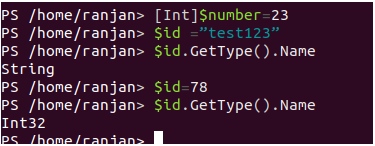We are going to assign the character string to the variable as the variable name Method 1. To turn off this behavior we need to specify the argument stringsAsFactors FALSE.
Here goes with some example data.

R treat character as variable. For this task we can use the following R code. One possible way is. X.
This method has been dealt with. Setseed 50 pred. The factor function is used to create a factor.
Date Conversion Functions to and from Character Description. Usage asDatex S3 method for character asDatex format tryFormats cY-m-d Ymd optional. PdffileDC_Alpha_Allpdf width15 First Variable is treated as string plot_dc_for_multiple_kapasAlpha 4 c5 4 coloridxc24 32 First Variable is now passed inside the function as variable devoff So I could save my time If I can make a function that for every variable produces the current number of plots.
If width is supplied and is not NULL the default method returns the first width - 4 characters of the result with. This means that if there is a column with characters R will treat this data as qualitative variable. Once the outliers are identified and you have decided to make amends as per the nature of the problem you may consider one of the following approaches.
A continuous variable however can take any values from integer to decimal. Dat. Evalparsetext x 1 42.
In this article we will discuss how to convert a character string to the variable name in the R programming language ie. We can assign character string to variable name by using assign function. For example we can have the revenue price of a share etc.
For instance if you have a factor with 2. To make R treat these values as nominal variables instead of numbers you should use the factor function. In this way all the characters in the imported file will be kept as characters once we read them in R.
Heres an example using simulated data to explain why the factor model may reduce so much more error. Dvariabler. It should be mentioned that if youre dealing with data of a single mode a matrix may be more efficient than a data frame.
A character vector of length 1 is returned. X. In the first example Im going to convert only one variable to numeric.
Now suppose we want to go the other way. Categorical variables in R are stored into a factor. Appended if the full result would use more than width characters.
Functions to convert between character representations and objects of class Date representing calendar dates. Datax1. This function takes the name of the vector to transform and converts its elements into nominal factor variables.
Once created factors can only contain a pre-defined set values known as levels. Mapping. For example a categorical variable in R can be countries year gender occupation.
The default method first converts x to character and then concatenates the elements separated by. Recently I had a professor ask me how to take a string and convert it to an R variable name on-the-fly. Time for the heatmap the 1st step here is to have 1 variable per row factors have to be converted to characters in order not to be dropped clustnum.
By default R always sorts levels in alphabetical order. Since most interesting data problems involve a mixture of character variables and numeric variables data frames are usually the best way to store information in R. Factors in R are stored as a vector of integer values with a corresponding set of character values to use when the factor is displayed.
Convert One Variable of Data Frame to Numeric. Imputation with mean median mode. We simply have to pass the name of the variable and the value to the function.
Both numeric and character variables can be made into factors but a factors levels will always be character values. Concatenate expressions to subset a dataframe. The only required argument to factor is a vector of values which will be returned as a vector of factor values.
Ive simplified the question per the comment request. The problem is as you can also see from comment above that my variable has to be converted to string first line and also at the second line should be used as a variable. While factors look and often behave like character vectors they are actually integers under the hood and you need to be careful when treating them like strings.
Strings as variable references in R. Lets check the code below to convert a character variable into a factor variable in R.

Powershell Variables How To Declare And Initialize Powershell Variables

Creating R Variables From Multiple Input Variables Using Code Displayr

Pin By April Olsen On Writing Book Writing Tips Writing Tips Writing Prompts

Creating R Variables From Multiple Input Variables Using Code Displayr

Convert A String To Variable Name In Python Delft Stack

Jack The Ripper Fate Tumblr Fate Fate Stay Night Anime Songs

R Convert Character String To Variable Name Example Turn Into Object



0 comments:
Post a Comment